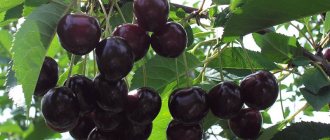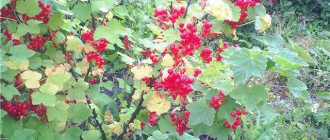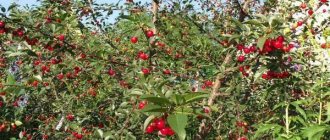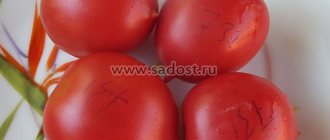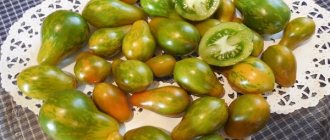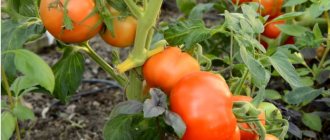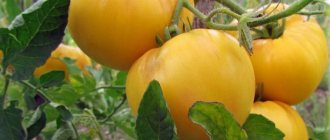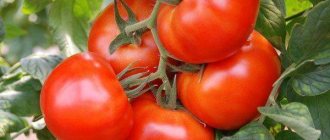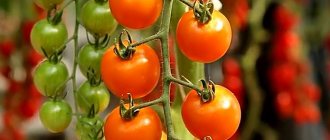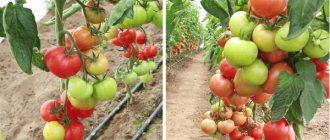Description of felt cherry Natalie
Felt cherry Natalie is the brainchild of the Far Eastern Experimental Station VNIIR.
Natalie was born back in 1979, thanks to the work of professional breeders. The work to create a new variety involved crossing the Leto variety with pollen from the Krasnaya Sladkaya, Ogonyok and Damanka varieties. In 1997, this felt variety was included in the State Register of the Russian Federation. In today's publication you will learn a detailed description of the variety, see a photo of Natalie's cherry, and also read reviews from those summer residents who grew this bush on their site.
How to plant
The hole for the Natalie felt cherry should be dug quite large. The optimal indicators for its depth and diameter will be approximately 50 cm. The soil mixture for the seedling is prepared by mixing fertile garden soil with rotted manure. To feed the plant at first, a little slaked lime and some kind of complex fertilizer are also added.
The roots of the seedling itself are cut to about 20 cm. This ensures their better development in the future. The seedling prepared in this way is lowered into a clay mash. The soil mixture is poured into the hole in a not too thick layer. Next, install the seedling and cover it with prepared soil.
In order for the felt cherry “Natalie” to take root well, it needs to be planted at the same depth as in the nursery. At the final stage, make a roll of soil around the plant and water it thoroughly.
Description of the variety
The bush is vigorous and can reach a height of up to 1.8 meters. Perennial branches are straight, gray in color, with a flaky surface. Annual shoots are brown in color and have pubescence on the surface.
The buds are small, with sharp ends, “collected” in groups of 3. Like annual branches, they have pubescence.
The leaves are oblong-oval, green in color. The leaf is covered with felt on the upper side and small hairs on the lower side.
Natalie's flower is saucer-shaped, medium in size, up to 2.5 cm in diameter. The color of the flower is white, the number of petals is 5.
Approximate flowering dates are May 10-18. The fruits ripen closer to July 13-18. The ripening of the berries occurs simultaneously, which allows you to harvest the entire harvest almost in one day.
Seedlings grafted onto a bush begin to produce crops already in the 2nd year of their life, and their own seedlings bear fruit 4 years after emergence. The life span of the bush is 18 years. Natalie's cherry is self-sterile.
Natalie is a fairly high-yielding variety. About 9 kg are collected from 1 bush.
The variety is drought-resistant. Loves water, but does not like waterlogging.
As for immunity, the variety is resistant to coccomycosis and relatively protected from clasterosporium blight. Not protected from moniliosis in case of high humidity conditions.
Berries
The fruits of the Natalie Felt Cherry are large, the average weight of a ripe berry reaches 4 grams. The shape of the fruit is oval with a slightly “cut off” top. The color of the berry is dark red, there is slight pubescence on the shell.
The flesh is red, there are cartilages. The fruit itself is very juicy and dense in structure. The color of the juice is red. There is a small bone inside the fruit. It accounts for about 5% of the total weight of the fetus.
Fresh berries contain (per 100 g):
- Dry substances – 11.6 g.
- Sugary substances – 8.2 g.
- Acids – 0.71 g.
- Ascorbic acid – 30.4 mg.
The fruits have an attractive, marketable appearance. The taste is sweet and sour, without any pronounced dominance in any direction. Taste rating 4 points out of 5. The fruits separate from the stalk very well.
Transportability is poor. Also, the berries of this variety are not suitable for mechanical harvesting.
Crown formation
The description of the felt cherry variety “Natalie” given above allows us to judge it as a fairly tall plant. This culture is actually developing very quickly. The same goes for her aging. Therefore, “Natalie”, like almost any other felt cherry, needs regular pruning. The technology of this procedure depends primarily on the age of the plant. The branches of two and one-year-old seedlings are cut off in the spring by about 1/3-1/4 if their length exceeds 60 cm. At the same time, all excess shoots are removed from the bush. Ultimately, the plant should have about 10-12 of the strongest branches left.
In subsequent years, in the spring, they mainly do only sanitary pruning of the Natalie cherry. That is, all frozen, dried and improperly growing branches are removed from the bushes.
At the age of 6-7 years, the felt cherry "Natalie", like many other varieties, may begin to experience a decline in yield. To prevent this from happening, you should do anti-aging pruning of the bushes. In this case, in the center of the crown of each plant, all old branches of the first and second orders are removed “in a ring”. Subsequently, new young shoots will begin to grow on the cherry next to the cuts. In the future they will produce good harvests.
In one place, the Natalie cherry can germinate for up to 18 years. However, experienced gardeners advise changing plants as early as fifteen years of age. Older cherries, unfortunately, do not produce particularly good harvests.
When pruning Natalie, it is advisable, among other things, to use garden varnish. They cover the “stumps” with it immediately after removing the branches.
Positive and negative qualities
From the list of felt cherries, Natalie occupies one of the leading positions. This is due to a number of advantages that the variety offers its owners. In particular, the main advantages of felt Natalie include:
- Early ripening of berries.
- High yields.
- High quality berries. Natalie's fruits are large and very tasty.
- High levels of frost and drought resistance.
- Good immunity, which protects the plant from such a common disease as coccomycosis.
At the same time, Natalie is not without shortcomings. First of all, it is worth noting:
- Self-sterility. To get a good harvest, a pollinator must be planted near Natalie.
- The bush does not tolerate waterlogging. Overmoistening increases the risk of moniliosis.
- With an excess harvest, the size of the berries becomes smaller.
- The berries are not suitable for transportation and mechanical collection, which makes Natalie unattractive in commercial circles.
How to fertilize correctly
In spring, felt cherry "Natalie" is usually fed with mineral products. In this case, a complex composition intended for berry crops is used. For good development, cherries require both potassium (about 20-30 grams per plant), phosphorus (70-80 g), and nitrogen (30-50 g). In the fall, it is advisable to feed this variety with organic matter. Well-rotted horse or cow manure is best suited for Natalie cherries. You can also use compost. In any case, you need to pour about four buckets of organic fertilizer under each plant. This variety is usually fed in the fall immediately after pruning.
Felt cherry “Natalie” produces the best yields on neutral soils. Therefore, the soil underneath should be limed from time to time. This procedure is carried out approximately once every 5 years. In this case, about 200-300 grams of lime per 1 m2 are used.
Rules of care
As with any crop, Natalie’s felt cherry needs to be looked after so that it produces a good harvest and does not suffer from various diseases.
Caring for cherries seems difficult at first glance, but in fact it is not. To make cherries happy with the harvest, you only need:
- From time to time, normalize the bush.
- Fertilize it periodically.
- Water.
- Protect from parasites and diseases.
Let's take a closer look at each of these points.
Rationing
In order for the bush to grow well and bear fruit, it needs to be rationed every year. In the spring, even before the start of sap flow and swelling of the buds, sanitary and formative pruning is carried out. That is, in the second year after planting the seedling in the ground, its branches are shortened to 40 cm in length.
After another year, all side branches are shortened by a third.
After the first fruiting, the side branches are removed, leaving only 7-10 main, most developed branches (central).
Subsequent pruning is performed for sanitary purposes. Remove dry, damaged or infected branches.
Fertilizer
In the first year after planting a seedling in a greenhouse, it is not necessary to feed it. He should have enough of the fertilizers that were added to the hole during the planting process.
The next year, the first fertilizing is carried out immediately after flowering. To do this, prepare a mixture of:
- Quail manure (chicken) - half a bucket.
- Urea – 30 g.
- Superphosphate – 50 g.
- Potassium nitrate – 20 g.
After the bush is fertilized with this mixture, it needs to be watered abundantly.
As an additional feeding, you can make a layer of mulch from vegetable peelings, peat or compost in the fall.
Watering
As noted earlier, Natalie's felt cherry does not like moisture very much. However, she still needs water. Water the bush during periods of drought with warm water (temperature not lower than 18 degrees Celsius). One plant uses a bucket of water.
Landing specifics
To ensure high yields, the formation of a beautiful crown, the health and strength of the tree, it is necessary to choose the right place for planting and prepare the soil.
Deadlines
The timing of planting depends on the region and the type of seedling (with a closed or open root system). Bare root plants are planted in the spring, after hard frosts, before buds open.
In autumn, planting is carried out in September and until the first half of October in the south, but seedlings in pots can be used throughout the gardening season.
Selecting a suitable site
The place for planting felt cherries should be warm, sunny, protected from strong gusts of wind. Mandatory conditions are well-drained soil; it should not be swampy, with stagnant water or severe spring flooding. Sandy, sandy loam or loamy soils with a neutral acidity level are best suited.
What to plant next
First of all, trees are planted nearby that will serve as pollinators. These include plums, cherry plums, felt cherries with a similar flowering period, peaches and apricots. It is necessary to maintain a distance so that vigorous trees do not shade or oppress the relatively low-growing felt cherry.
Cherries will look impressive in the foreground of group plantings of ornamental trees and tall plants; hostas or heucheras can be planted at the feet. Also good neighbors will be lilies of the valley, elderberry, violets, and periwinkles. But it is better not to plant nightshade and coniferous plants, as well as berry bushes, next to felt cherries.
See also
How to permanently get rid of cherry trees on your property with your own hands
Read
Preparing the seedling and planting hole
The planting hole is dug depending on the size of the root system; its size for felt cherries is 50x50x50 centimeters. If necessary, lay a layer of drainage on the bottom and fill it with a mixture of non-acidic peat, rotted manure, and mature compost. The roots of seedlings are cut off to 20-25 centimeters and soaked for a day in a solution of a fungicide and growth stimulator. For plants in pots, first thoroughly water the substrate.
Landing technology
For this purpose, young plants 1-2 years old are used. When planting a seedling in pots or bare root, it is placed at the same level as it grew before, neither higher nor lower. A mound of substrate is poured into the bottom of the hole, the roots are spread out on it, then covered with soil, lightly compacted and watered well.
Diseases and pests
Natalie herself has a strong innate immune system. It is resistant to diseases such as coccomycosis and clasterosporiosis, however, if the bush is not taken care of, it may encounter pocket disease and monoliosis.
In order to protect the bush from possible diseases, the following preventive work can be carried out:
- In the spring, before the buds bloom, treat the tree with a solution of copper sulfate (100 g of copper sulfate should be diluted in a bucket of water).
- Periodically carry out sanitary pruning of bushes.
- In autumn, remove fallen leaves.
As for parasites, the most common pests of this felt variety are:
To prevent and combat these parasites, special pesticides or folk remedies are used, such as soap/garlic solution or wormwood infusion.
Diseases and their treatment
The most dangerous diseases of felt cherries are, according to many experienced gardeners, cleasterosporiasis and monilial burn. The felt cherry “Natalie,” as already mentioned, is quite resistant to the first type of infection. The risk of her developing a monilial burn is quite high. This infection in Natalie cherries can be determined primarily by the presence of dried brown shoots in the crown. Moniliosis is dangerous primarily because its manifestations are very easy to mistake for freezing during spring frosts or a burn when using insecticides.
Drying of shoots occurs in this disease due to the vigorous activity of a special type of fungus belonging to the Monilia family. The spread of this parasite can be facilitated by wet weather and various types of insects that carry spores from plant to plant. Already in the first year, due to this disease, the gardener may lose a large share of the crop.
It is not possible to cure felt cherry moniliosis “Natalie” using folk methods. The gardener will have to use a complex technique using chemicals. Treatment of this disease includes several mandatory measures:
- pruning infected branches;
- autumn cleaning of fallen leaves from under bushes;
- regular treatment with copper-containing preparations.
Reviews from gardeners
Valentina Igorevna, Kharkov, 42 years old.
At one time I grew several felt cherries, they are also called Chinese. Natalie was among them. What can I say, it didn’t catch on with us. No, not in the sense that it grew poorly or did not tolerate frost, but in the sense that I didn’t really like the taste. We have a small garden, and we always wanted to plant it with cherries. Friends advised me to plant felt cherries, they say they are productive and easier to care for than ordinary cherries. We tried their cherries, they seemed to be normal, but for some reason ours grew sour. We uprooted 5 felt bushes and planted ordinary cherries and sweet cherries.
Dmitry Ivanovich, Moscow, 51 years old.
Cherry is great. The yield is high, the cherries are rather small and sour, but we grow them purely for making jam. I was personally convinced that felt cherries are an excellent cherry for jam.
History of selection
The felt cherry variety Natalie was bred in 1979 in the Far East, at the experimental station of the All-Union Research Institute of Plant Growing named after. N. Vavilova. The parent variety for it was Leto, pollinated with mixed pollen of Damanka, Red Sweet and Ogonyok.
The authors of Natalie are V. P. and N. A. Tsarenko. Work on the development of this cherry variety has been carried out for 20 years.
Natalie was entered into the State Register in 1997.
How to choose the right landing site
In the garden, it is advisable to place the felt cherry “Natalie” in the sunniest area. This will allow you to obtain maximum yields in the future. The advantages of this variety, among other things, include its undemanding nature regarding soil composition. Cherry “Natalie” will grow well on almost any soil. But it is best to choose for it an area with fertile and light-textured soil. A prerequisite for this is the absence of nearby groundwater.
“Natalie” is a self-sterile variety. This means that growing only one seedling in the garden is pointless. In this case, it will be impossible to obtain a harvest. Next to “Natalie”, for example, other felt cherries must grow. In this case, its flowers will produce many ovaries. Among other things, this variety has one very interesting feature. Its flowers can also be pollinated by related fruit crops. For example, cherry plum and plum are good pollinators of the Natalie cherry.
Description of culture
Felt cherry Natalie is a tree-like spreading shrub from 1.7 to 2 m tall.
The bush is wide, ovoid or slightly flattened oval in shape, with medium density. The perennial branches are thick, gray in color, and covered with rough bark. Young shoots are greenish-brown.
The buds are small, pointed, slightly deviated from the shoot. Natalie's leaves are light green, small (up to 6 cm long), wrinkled, with a pointed tip. The edge of the leaf blade is corrugated. The length of the petiole is 7 mm, the thickness is average.
The flowers are numerous, large (from 2 to 2.5 cm in diameter), saucer-shaped. Initially they are white-pink in color, after a week they fade and become completely white. There are five petals. The type of flowering is continuous, this applies to all branches (both annual and perennial).
The fruits of the Natalie variety are very large for felt cherries (weighing up to 4 g). The shape resembles a wide oval, tapering downward. The peduncle is short (about 4‒5 mm), slightly pubescent, and can be separated from the fruit without effort. The skin is dark red, covered with short, barely noticeable hairs. The pulp is scarlet, dense, juicy, with small cartilages (like a cherry fruit). The seeds of Natalie's felt cherry are beige in color, oval in shape, and small (only 5% of the total mass of the fruit). The taste of the fruit is harmonious, sweet with pleasant sourness.
Natalie's life expectancy with proper care is up to 18 years.
Due to the universal characteristics of this variety, the cultivation of Natalie felt cherry is recommended in all regions of Russia. It is suitable for cultivation in nurseries, in intensive gardens (with fruit processing points close to each other), as well as for amateur gardening.
How to water
Excess moisture is, as already mentioned, something that the Natalie felt cherry really doesn’t like. Photos of healthy bushes of this crop are presented on the page. The poured Natalie cherry looks completely different. The beginning of damping off of this crop in the early stages can be determined, for example, by rotting of the root collar. In any case, “Natalie” should be watered moderately. It is necessary to moisten the soil under this plant mainly only during drought. Typically, bushes are watered no more than three to four times per season (about once every 1-1.5 months).
It is believed that it is best to moisten the soil under “Natalie” by sprinkling. This is explained primarily by the superficial occurrence of the root system. Using a hose, it can be easily washed. Actually, sprinkling itself should be carried out exclusively in the evening or morning. Otherwise, it will be possible to “burn” the leaves of the plant.
Characteristics
Drought resistance, winter hardiness
Natalie is a felt cherry variety characterized by high winter hardiness. The trunk and branches of the bush can withstand frosts down to -35 degrees. Flowers tolerate spring frosts well (down to -3 degrees).
This variety is also highly resistant to drought.
Pollination, ripening time and flowering period
Felt cherry Natalie is an early variety. It blooms around May 20-27, the fruits ripen in the first or second decade of July.
The variety is self-sterile. Pollinators for Natalie's felt cherry should grow in the same area as it and bloom at the same time.
The following can perform well in this role:
- plum;
- peach;
- apricot;
- cherry plum;
- cherries of other felt varieties.
Productivity, fruiting
Felt cherry seedlings Natalie begin to bear fruit in the second year. The variety is characterized by high yield - 7–10 kg can be harvested from a bush. The berries will ripen en masse and at the same time.
The berries of Natalie's felt cherry are much less sour than those of ordinary cherries. There is no astringency in their taste. They contain: 12% dry matter, 8.3% sugar and 0.8% acids. The content of ascorbic acid in 100 g of Natalie berry pulp is 24 mg.
The tasting score of the Natalie variety is 3.8–4 points (with a maximum of 5).
The transportability of the fruit is low. They should be collected exclusively by hand. Natalie berries can be stored in the refrigerator for no more than 6 days. And only 3 days - at room temperature. It is advisable to process them immediately after collection.
Area of application of berries
In terms of economic purposes, the fruits of the Natalie felt cherry are considered universal. They are eaten fresh and also used to make juice, preserves, marmalade, jam, marshmallows and marmalade. Natalie's berries make delicious wines and liqueurs.
Fruit
The description of the felt cherry “Natalie” given above allows us to judge it as quite unpretentious. Among other things, the bushes of this crop, in comparison with other varieties, grow very large berries. Their average weight is 4 grams. The fruits of the Natalie felt cherry are dark red in color. The skin of ripe berries is covered with short hairs. The pulp of the fruits of this variety is cartilaginous, dense, and juicy. According to many farmers, its taste is simply excellent. The juice of the fruit is red, sweet and sour.
Judging by the description of the felt cherry variety “Natalie” (the photo on the page also confirms this), its berries are really large in size. It is believed that the fruits of this crop are excellent for both processing and fresh consumption. If desired, you can make not only jam, preserves, compote or marshmallow from the berries of this cherry. Many owners of summer cottages make very tasty wine from them.
Description and characteristics of the variety
The description of the variety will help inexperienced gardeners become familiar with its main features. This variety of cherries belongs to medium-sized plants, since the maximum height of the trees reaches two meters. In spring, all stems are covered with small oval leaves, the lower part of which is covered with fluff.
Their surface is covered with small wrinkles of a greenish tint. The maximum leaf length is 6-8 cm.
Felt Natalie is characterized by high productivity. In the first half of summer, cherries weighing 3-4 grams are formed on the branches. They are covered with a thin red peel, under which there is juicy pulp with a stone. Natalie has excellent taste, and therefore compotes, preserves and jam are often prepared from her fruits.
Features of cultivation
Before planting cherry seedlings in the garden, you should familiarize yourself with the features of growing such a plant.
Choosing a landing site
It is recommended to take the choice of planting location seriously, as the yield depends on it. Lighted areas in the garden that are protected from wind gusts are suitable for cherries. Trees should be grown in loamy or chernozem soils.
Watering
The root system of cherries needs periodic moistening, and therefore, when growing, Natalie will have to water. To do this, several furrows are made near the crown into which water is poured. It is enough to moisten the soil 2-4 times a month.
Fertilizers
The Natalie variety will bear fruit normally if you feed the tree regularly. In summer, fertilizing is added to the soil 2-3 times. It is recommended to use fertilizers that contain potassium, nitrogen and phosphorus.
Characteristic
It is necessary to familiarize yourself in advance with the characteristics of fruits and pollination of trees.
Possible pollinators
Natalie is a self-fertile plant variety that requires additional pollinators. However, they should be grown near cherry trees.
Among the most effective pollinators for plants are:
- peaches;
- plums;
- apricots;
- quince.
Fruit
The first harvest can be harvested only two years after Natalie is planted in the garden. If you follow all the recommendations for caring for the trees, you will be able to collect about 5-8 kg of cherries from each of them. The main feature of the fruit is its taste. Unlike other varieties of cherries, they do not have a sour taste.
The disadvantages of fruits include their poor preservation and transportability. The harvested crop is stored for no longer than a week.
